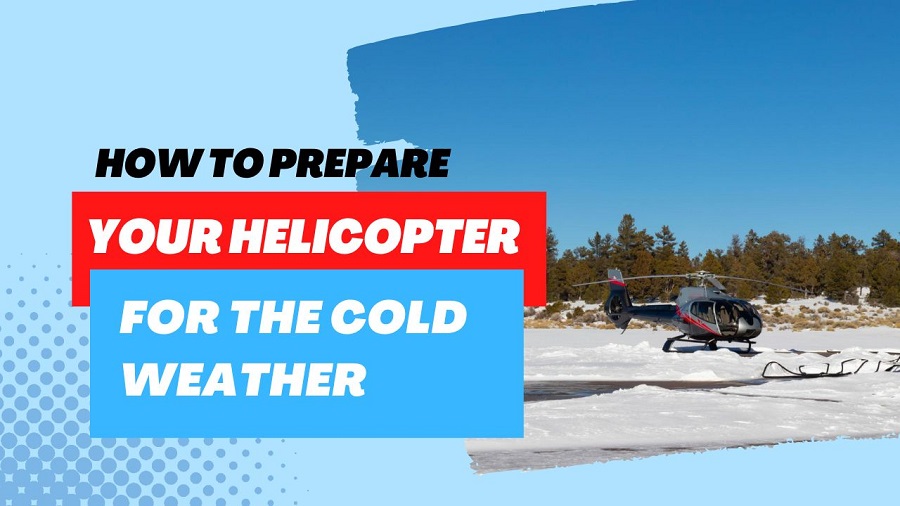News
Dec 19, 2022 - Prepare Your Helicopter For Cold Weather - Order Spare Parts Today
Colder temperatures require you to take more comprehensive measures to keep your helicopter in the air and less on the ground. At Rotorlink, we have years of experience with helicopters and sourcing parts. Talk to us about helicopter Parts, Evaluation, Consulting, and Brokerage Services.
helicopter parts supplier Evaluation, Consulting, and Brokerage Services
It is important to keep spare helicopter parts on hand in cold weather for a number of reasons. First and foremost, cold weather can have a detrimental effect on helicopter performance. As temperatures drop, the viscosity of oils and other fluids used in the helicopter's systems increases, making them thicker and more difficult to circulate. This can lead to reduced lubrication and increased wear on mechanical parts. Cold weather can also cause metal components to contract, potentially causing them to fail or become damaged. In addition, helicopters are often used in a variety of challenging environments, including mountain tops and remote locations, where access to replacement parts may be limited. Having spare parts on hand can help to ensure that any necessary repairs can be made quickly and efficiently, reducing downtime and allowing the helicopter to return to operation as soon as possible.
The cost of repairing or replacing damaged parts can be significant, especially if the helicopter is out of service for an extended period of time. By keeping spare parts on hand, it is possible to minimize these costs and ensure that the helicopter remains a cost-effective mode of transportation.
Keeping spare helicopter parts on hand in cold weather is essential for maintaining the performance and reliability of the aircraft, minimizing downtime and repair costs, and ensuring that it is always ready to meet the needs of its operators.

It is possible to prepare for potential mishaps or disasters by conducting frequent inspections of your helicopter or aircraft. The best way to prepare for a flight is to devise a plan and check a pre-flight checklist beforehand. Additionally, it gives you some peace of mind knowing there is some assurance midair. When all else fails, make sure you have an emergency plan in case of emergency. The importance of conducting a comprehensive pre-flight checklist cannot be overstated, especially during winter and fall. It is imperative that you ensure that everything is in good working order, from the propellers to the vision in front. To avoid hard ice, cuts, or cracks, de-icing equipment should also be inspected. Last but not least, make sure to inspect fuel tank vents before takeoff. In the event that a vent is clogged by ice or snow, the engine may cease to run and the tank may collapse, causing extensive and costly damage. Clean fuel tanks will prevent midair disasters.
Colder weather poses the greatest risk for helicopters due to frozen precipitation and icing. The propellers of your helicopter can be clogged with ice, which should always be avoided while in flight. Furthermore, ice can also accumulate when flying at high altitudes, causing the helicopter to stop mid-flight. As soon as ice forms on the propeller or rotor wings, the helicopter loses lift and is no longer safe to fly.
Helicopters don't typically come with anti-icing equipment that would make them ideal for flying in colder weather. Additionally, icier precipitation isn't always visible, making it even more difficult to predict and fly in. Helicopter pilots must be extremely cautious when flying in freezing weather or if ice has formed everywhere due to frigidity. There is also the possibility of snow affecting helicopter flights. Although light snow conditions are generally safe for flying, heavy snow can cause serious problems when attempting to fly and can build up quickly. Before starting your helicopter, you should always remove snow oils from the pad.
#leonardo #augusta #aw119 #koala #helicopters
In addition, strutting up the engine should clear them from the intakes. You should always keep your helicopter hangar in a large space during the winter. Pre-flight routines should also include proper preheating of the engine and gas.
Warming up your helicopter before taking off is one way to keep it active during cold weather. The manufacturer's user manual will likely suggest you keep the helicopter running long enough to fully warm up in cold weather to avoid potential damage from water in the air.
We have the expertise to support you through the entire lifetime of your aircraft, from purchase to maintenance to repair. By keeping your helicopter operating at peak performance and in utmost safety for as long as possible, you’ll avoid loss of productivity and reduction of service to your clients, and protect your bottom line.
If you'd like to know more about our services and what we do, please give us a call at (604)-628-8188 or contact us HERE.
